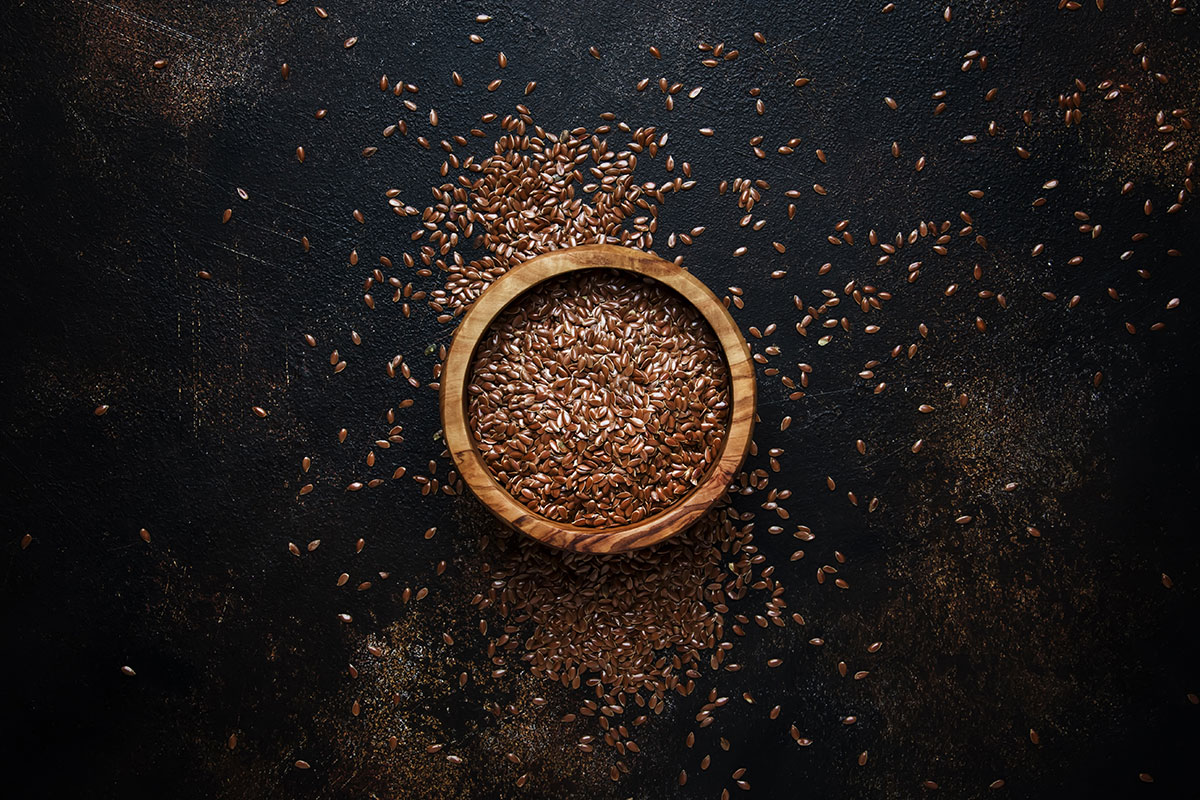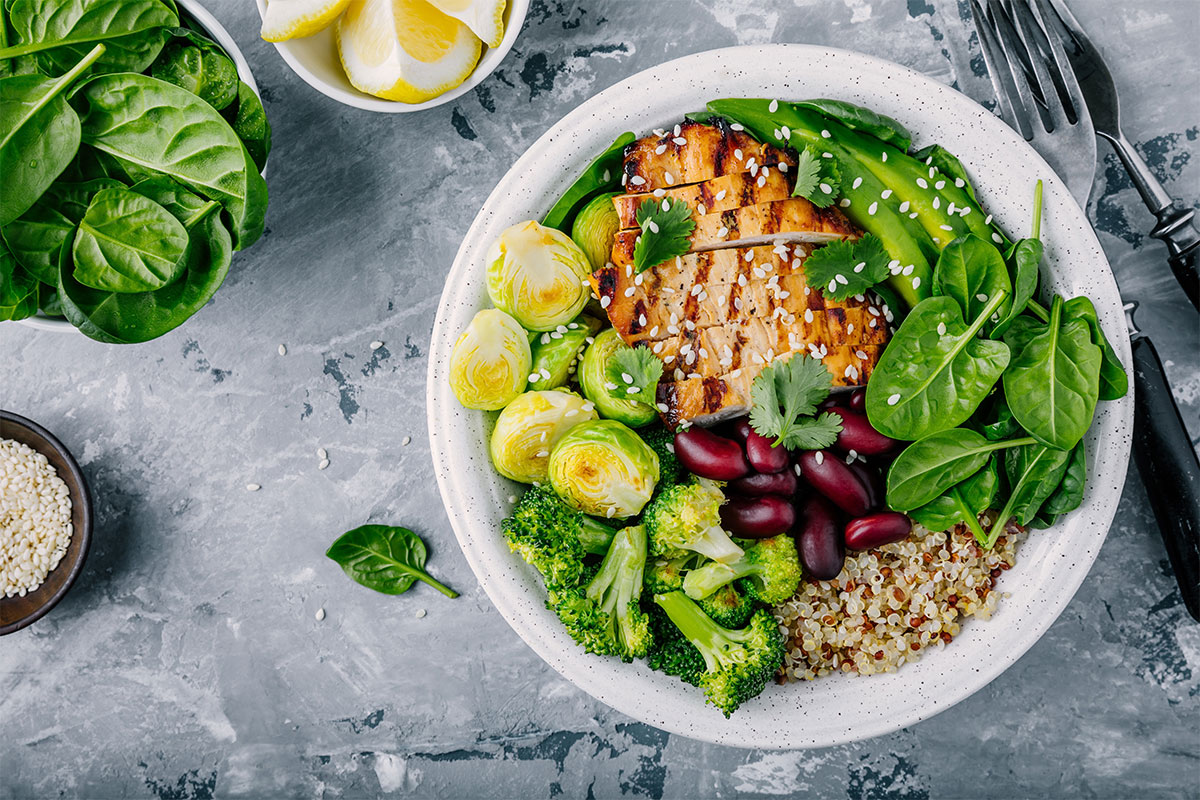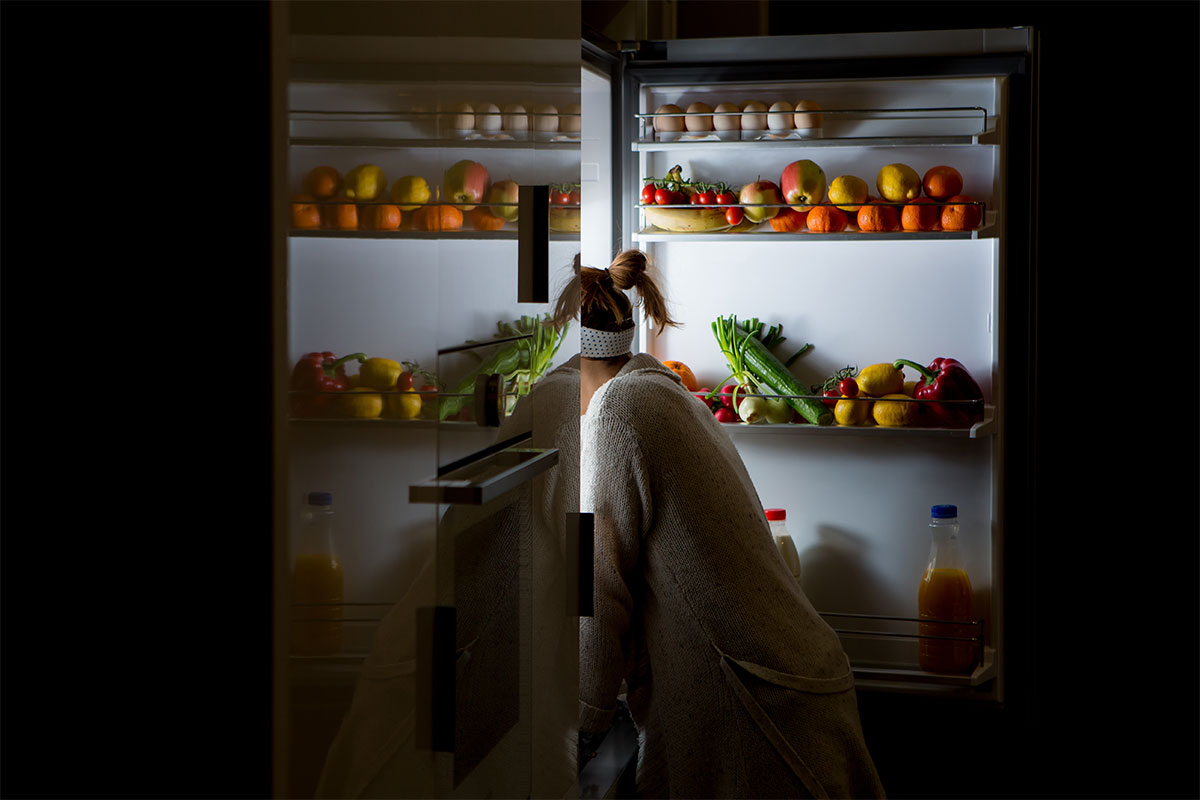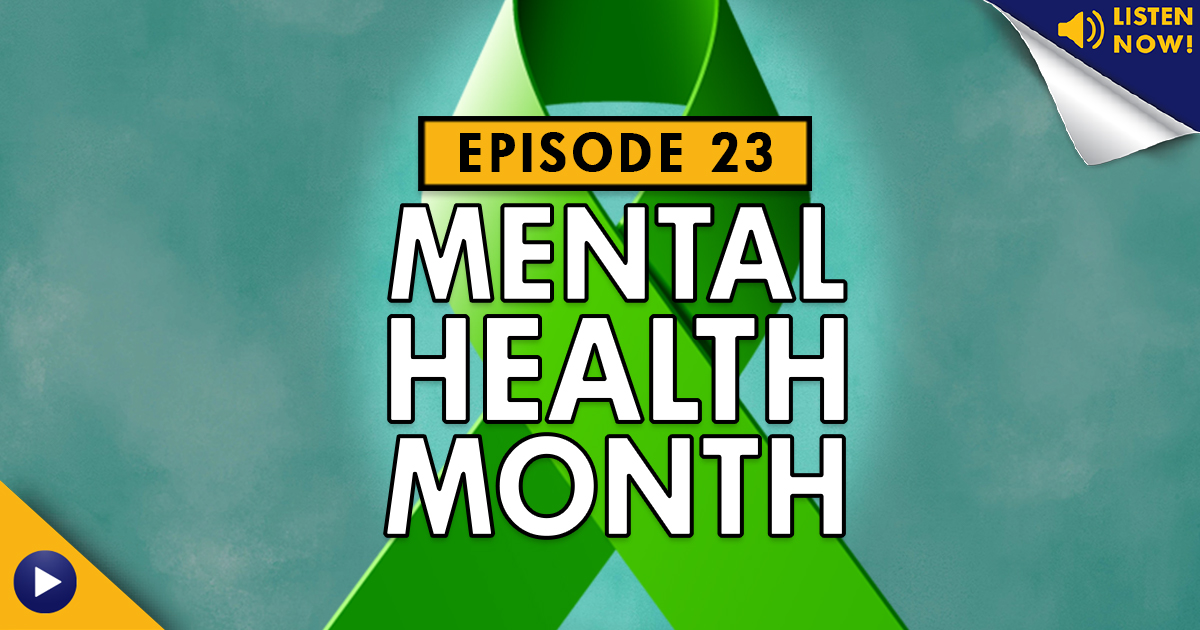Why am I Gaining Weight Despite Diet and Exercise? │ QA
If you’re careful with your nutrition, working out weekly, and still experiencing problems with your weight, take a moment to read this QA.


Does flaxseed help in increasing fertility and weight loss?
– Shamily BM

There has been a lot of chatter in the media regarding flaxseeds and fertility. Looking at the research, I found evidence to support its effect on menstrual cycle and hot flashes, but nothing conclusive regarding conception in humans. So, flaxseed may have an insignificant effect.
Flaxseeds are high in fiber which helps promote satiety so that appetite is dampened and fewer calories are consumed. Theoretically, this would translate into weight loss if people didn’t compensate elsewhere in their diets. Again, there’s a lack of studies showing an isolated effect on body weight from flaxseed consumption alone.
No matter the physiological effect, it would take a lot of flaxseed to make an apparent isolated difference. My advice is that cracked or crushed flaxseeds* should be included to complement an overall healthy diet, similar to the addition of chia seeds, garlic, or ginger. Start with a teaspoon here and there to see in which foods it’s most acceptable. I like it on yogurt, in smoothies, oatmeal, grain breads, mustard, soups, and meatballs. If you’re committed you can work up to 2-4 tablespoons of flaxseed a day, as recommended by health experts.
*Why cracked or crushed flaxseed is best – Whole flaxseed is a good source of soluble fiber and lignans (phytoestrogen precursor) but isn’t fully digested to get the full nutritional benefit. Freshly cracked or crushed flaxseeds offer fiber and lignans plus thiamin, magnesium, and omega-3 fatty acids including alpha-linolenic acid. Ground flaxseed, milled flaxseed, and flax meal can also be used but spoil more readily than the whole flaxseed, so keep them in the freezer. Flaxseed oil doesn’t contain the fiber, lignans or micronutrients; it only has the fat.
– Debbie J., MS, RD
This article should not replace any exercise program or restrictions, any dietary supplements or restrictions, or any other medical recommendations from your primary care physician. Before starting any exercise program or diet, make sure it is approved by your doctor.
Some questions have been edited for length and/or clarity.
 Have a nutrition question? Our registered dietitian is ready to help!
Have a nutrition question? Our registered dietitian is ready to help!
Email nutrition@lafitness.com or submit your question below and it may be featured in an upcoming article!
If you’re careful with your nutrition, working out weekly, and still experiencing problems with your weight, take a moment to read this QA.
Blood sugar control isn’t easy. These are Debbie’s top recommendations for how to address weight control with Type II Diabetes.
It's easier to work hard when you’ve got a game plan. Here are some options to help keep you moving until the last second of your workout!


I would like to know how I determine what my macro breakdown should be? How do I know how to calculate my split as far as protein/fats/carbs based on my weight & height? And what carbs are good for me? Female, Weight 170 lbs., Height 5’2’, Weightlift 5 days per week Cardio 3-5 times per week. I need help (guidance) with the nutrition part of my weight loss journey.
– Yolanda G.

Given your current exercise regimen, your estimated daily energy needs for weight loss are about 2,000 calories if 20-30 years old (subtract 75 calories per decade older). Not knowing anything about your present intake, I’d recommend a rough caloric distribution of 30% fat, 20% protein, and 50% carbohydrates. Breaking down the 2,000 calories would give us 67 gm fat, 100 gm protein and 250 gm carbohydrate per day.
I’m so glad you asked about which carbohydrates are good! That indicates you’re aware that quality matters as much as quantity – for all three macronutrients. Complex carbohydrates that are more wholesome (less refined) are preferred over processed sources. Think of oats, quinoa, corn, potatoes, and vegetables complimented by simple carbohydrates from fresh fruit and milk products.
Here’s a one-day sample 2,000 calorie menu providing 27% fat, 22% protein, and 51% carbs*:
3 Snacks –
* Calculated by Registered Dietitian Nutritionist using Fitday.com’s food log function. Findings were used along with RDN’s professional judgment.
– Debbie J., MS, RD
This article should not replace any exercise program or restrictions, any dietary supplements or restrictions, or any other medical recommendations from your primary care physician. Before starting any exercise program or diet, make sure it is approved by your doctor.
Some questions have been edited for length and/or clarity.
 Have a nutrition question? Our registered dietitian is ready to help!
Have a nutrition question? Our registered dietitian is ready to help!
Email nutrition@lafitness.com or submit your question below and it may be featured in an upcoming article!
If you’re careful with your nutrition, working out weekly, and still experiencing problems with your weight, take a moment to read this QA.
Blood sugar control isn’t easy. These are Debbie’s top recommendations for how to address weight control with Type II Diabetes.
It's easier to work hard when you’ve got a game plan. Here are some options to help keep you moving until the last second of your workout!


It is near midnight. The house is quiet, and it’s officially “lights out.” Then, suddenly you are alarmed by a loud and mysterious rumbling that begins to echo to every corner of your bedroom. You turn over and reposition your lethargic body on its side; hoping it was all just a part of a dream. A few minutes pass and the same resounding rumble begins to grow even more violent. You can no longer ignore the internal calling we all dread to acknowledge a quarter past midnight. No longer can its origins be disguised for anything other than the dark deep abyss of your hollow stomach.
Translation: You’ve got the serious case of the late-night munchies.
At this point, you have a decision to make. You try to talk yourself out of dragging your sluggish legs into the kitchen to satisfy your appetite, but the internal debate of “to eat or not to eat” is waking more neurons in your brain, making it nearly impossible to fall back asleep. Feeling restless and still hungry, you head to the kitchen and look for anything that doesn’t require any actual effort beyond pouring yourself a bowl of cereal.
Like many of us, we have all experienced a similar internal dialogue when deciding between making healthier choices over the not-so-healthy-ones. We are confronted daily with choosing between the salad or fast food, the workout before your 8 am meeting or hitting the snooze button for the fifth time. Unfortunately, we are often faced with the guilt and only momentary satisfaction when self-control is less effective on those days your supervisor decides to leave a free-for-all box of hot-and-ready-to-eat donuts in the conference room. Then there are those seasons of pure discipline when it’s strict dieting, no sugar, skip the happy hour, and the “I’ll just have a spinach kale salad with vinegar and oil on the side.” Unfortunately, we are often faced with short-lived results only to return to the same habits as before.
So, if we are what we eat, what’s the secret in actually doing it well?

Let’s put some things in perspective – our relationship with food has gotten a negative rap throughout the existence of American mass media. It is either introduced as being the enemy or the solution to our overall well-being. It is either quick-fast and not nutritionally dense “meals” we have easy access to at your nearest fast food chain, or it’s posed as an almost militarized form of consumption, aka steamed veggies and grilled chicken Monday through Friday.
This duality of “good and bad” types of eating sends many of us on an emotional roller-coaster when making day-to-day healthy choices. I carry the firm belief that our relationship to food is tarnished when used for reward or punishment. If we bring it back to basics, when we were first developing as a species, food was medicine, and a resource to aiding our bodies to function and fuel itself for our day-to-day activities. We have commercialized the food industry so much, that we as consumers feel trapped and often disempowered when making instinctual decisions about what our body’s actual need!
The fact that every single day we get to decide when and what we eat is nothing short of a privilege; especially when we consider people who geographically, socially, and economically don’t have the same luxury. So, when we take a step back and see the purpose behind why we eat, we might be able to lessen the pressure of making those healthier choices.
You might be thinking, does that mean I have to drop the cookies and grab the carrot sticks instead? Well…not exactly.

Looking back, I can attest that every great childhood memory, every birthday and celebration has good food somewhere in the picture. I’m talking about that feel-good-straight-out-of-Grandma’s-oven home cooking or recalling the greatly anticipated pizza parties when your class scored highest in the school’s spelling bee. There were no counting macros or guilt-tripping myself into burning extra calories on the treadmill at the gym the next day. Food was something to be enjoyed in those moments, and they still should be!
Navigating healthy-living through food shouldn’t feel like a death sentence to enjoying quality time with friends and family. Rather, it is acknowledging that food and these impressionable moments in life often go hand in hand, and we can find ways of empowering ourselves by setting ourselves up for success. For example, try introducing newer ways of enjoying more vegetable side dishes at the next family potluck, or adding more fruits and veggies in school lunches for the kids over fruit snacks.
When we surround ourselves with healthier options we are more likely to incorporate them in our lifestyle with greater ease than the polarizing feeling we often feel when we are under-prepared and just down-right hungry.
A person who knows a lot about eliminating the stress and pressure around food while still enjoying healthier choices is former White House Chef to the Obamas and Food Policy Advisor, Sam Kass.
Kass knows a thing or two about ways you and your family can feel more empowered on making better choices without the fuss! His newly released cookbook, Eat a Little Better: Great Flavor, Good Health, Better World, is based on the philosophy that there is no “right way” but there is always a better way we can approach diet and nutrition to support our households and the planet. His approach to changing our relationship with food is approachable for anyone wanting to take a more proactive step towards optimal health, minus the excess will-power. Think “small changes that collectively make a bigger impact in the long run!
“Eat one vegetable a day. Just one. Eat whole grains and beans once more a week. When this becomes your new normal–in two weeks, ten weeks, or a year–you raise the bar again.”
If there is one food trend I think we have all been neglecting it is that food is our friend when we allow it. It is the fuel and the fun in our lives that collectively make for a better, more enjoyable living. You were made to enjoy the fruit of your labor (literally!) So if that means working your butt off and enjoying that ice-cream with the kids on the weekend so be it. If it means learning new ways to cut out processed sugar and introduce fresh and dried fruits to curb an unhealthy habit, that’s great too.
Making better choices for you and your family ultimately comes down to meeting the needs that are going to support the lifestyle and results you envision having. For me, my “better” means throwing out fad-diets and picking up healthier ways to live for the long run. Call me crazy, but I’m a firm believer that you can live a healthy life and still have that cake and eat it too!
Sources:
If you’re careful with your nutrition, working out weekly, and still experiencing problems with your weight, take a moment to read this QA.
Blood sugar control isn’t easy. These are Debbie’s top recommendations for how to address weight control with Type II Diabetes.
It's easier to work hard when you’ve got a game plan. Here are some options to help keep you moving until the last second of your workout!


I have been swimming for 30 minutes, 4 days a week, at 6AM. Is it best to not eat a sensible breakfast until after I swim? My son is a varsity state swimmer and says not to eat until mid or late morning so that my fat is burned as fuel first.
– Lorin and Diana S.

Tristen Alleman, one of our Pro Results® Personal Training Directors, shared that it’s best to do your morning aerobic work while fasted in order to burn more fat. Theoretically, since the body has been using glycogen overnight (fasted) while insulin levels drop, it shifts toward greater fat utilization in subsequent exercise. Most research supports this notion, though it may not be the case during energy restriction. There is also a lack of evidence showing resultant changes in body composition.
I’d advise eating your breakfast just after your morning workout and not waiting until mid-morning, both for your muscle recovery as well as for convenience – it’s easier to eat your sensible meal before getting to early work.
Resources:
– Debbie J., MS, RD
This article should not replace any exercise program or restrictions, any dietary supplements or restrictions, or any other medical recommendations from your primary care physician. Before starting any exercise program or diet, make sure it is approved by your doctor.
Some questions have been edited for length and/or clarity.
 Have a nutrition question? Our registered dietitian is ready to help!
Have a nutrition question? Our registered dietitian is ready to help!
Email nutrition@lafitness.com or submit your question below and it may be featured in an upcoming article!
If you’re careful with your nutrition, working out weekly, and still experiencing problems with your weight, take a moment to read this QA.
Blood sugar control isn’t easy. These are Debbie’s top recommendations for how to address weight control with Type II Diabetes.
It's easier to work hard when you’ve got a game plan. Here are some options to help keep you moving until the last second of your workout!

Welcome to the 23rd episode of the Living Healthy Podcast, presented by LA Fitness.
May marks the start of Mental Health Month, and so on today’s episode, we bring back Dr. Neel Doshi, to help us understand exactly what mental illness is, the effects of mental illness on the body, and how social media and technology play into these conditions.
We also discuss ways to reach out for treatment and the future of mental health in general. Dr. Doshi is double board certified in Adult Psychiatry and Child & Adolescent Psychiatry, with Kaiser Permanente of Orange County. He joined us about 6 months ago to discuss this topic, and we had yet another great conversation with him!
For more information on ways you can get involved for Mental Health Month, please visit http://lafitnesscares.com/.
How Are We Doing?
This podcast should not replace any exercise program or restrictions, any dietary supplements or restrictions, or any other medical recommendations from your primary care physician. Before starting any exercise program or diet, make sure it is approved by your doctor.
Introduction
Begins at 0:01
Dr. Neel Doshi, double board certified in Adult Psychiatry and Child & Adolescent Psychiatry, with Kaiser Permanente of Orange County, joins the show
Begins at 0:39
What is Mental Health?
0:48
Why is Mental Health Becoming So Mainstream?
2:48
How Can We Bridge the Empathy Gap?
4:20
What Are the Best Ways to Engage with Someone Struggling with a Mental Illness?
5:27
How Do Mood and Emotions Correlate with Mental Health?
7:42
How Much Does Your Environment Affect Your Mood?
9:09
Humor’s Impact on Mental Health
10:32
Natural Defense Mechanisms: How They Play a Part in Our Emotions
12:28
Social Media and Technology: How It Affects Mental Health
13:06
Mental Health Apps
14:25
Which is a Bigger Threat to Positive Mental Health: Social Media or Living a Sedentary Life?
17:35
Are There Certain Types of Exercise That Are Best for Improving Mental Health?
20:26
How Long Should You Exercise to Reap the Benefits?
21:52
Does Everyone with Mood Issues Need to Be in Therapy?
24:03
The Future of Mental Health
25:10
Actionable Advice
26:36
Outro
28:17
If you’re careful with your nutrition, working out weekly, and still experiencing problems with your weight, take a moment to read this QA.
Blood sugar control isn’t easy. These are Debbie’s top recommendations for how to address weight control with Type II Diabetes.
It's easier to work hard when you’ve got a game plan. Here are some options to help keep you moving until the last second of your workout!
Be the first to know about exclusive
content, deals and promotions